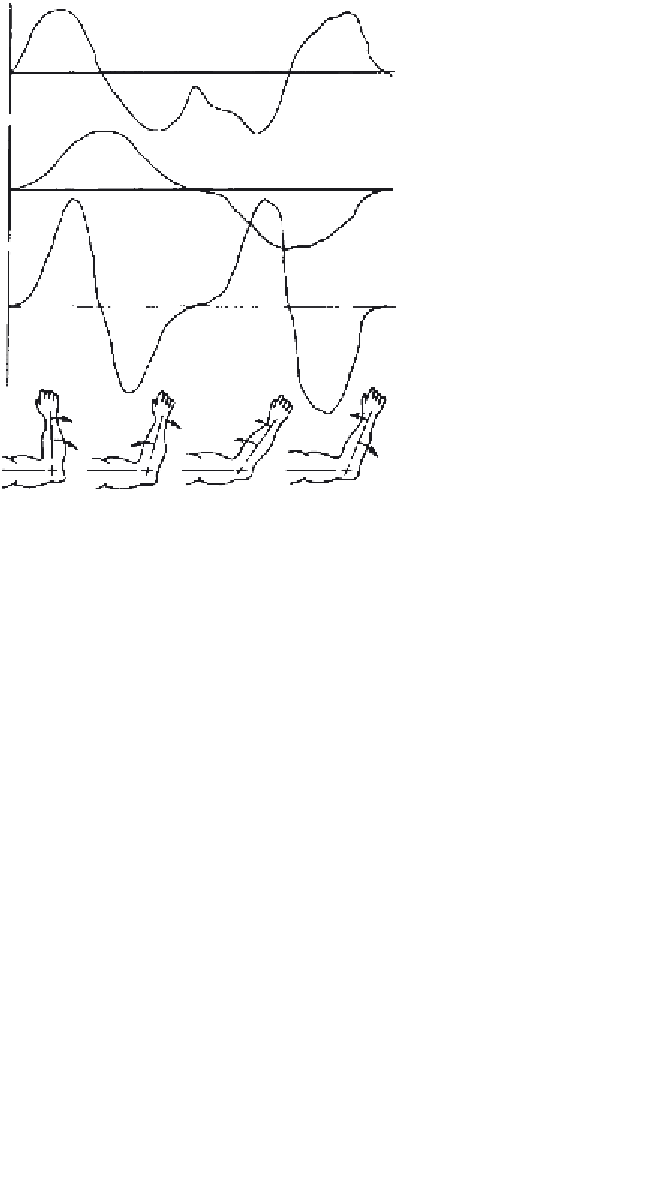Biomedical Engineering Reference
In-Depth Information
t
1
t
2
t
3
t
4
t
5
w
j
w
j
w
j
w
j
M
j
M
j
M
j
M
j
Figure 6.6
Sequence of events during simple extension and flexion of forearm. Muscle
power shows two positive bursts alternating with two negative bursts.
As has been described in the previous sections,
P
m
can be either positive
or negative. During even the simplest movements, the power will reverse
sign several times. Figure 6.6 depicts the muscle moment, angular veloci-
ties, and muscle power as a function of time during a simple extension and
flexion of the forearm. As can be seen, the time courses of
M
j
and
ω
j
are
roughly out of phase by 90
◦
. During the initial extension, there is an extensor
moment and an extensor angular velocity as the triceps do positive work on
the forearm. During the latter extension phase, the forearm is decelerated by
the biceps (flexor moment). Here the biceps are doing negative work (absorb-
ing mechanical energy). Once the forearm is stopped, it starts accelerating
in a flexor direction still under the moment created by the biceps, which are
now doing positive work. Finally, at the end of the movement, the triceps
decelerate the forearm as the extensor muscles lengthen; here,
P
m
is negative.
6.0.7 Mechanical Work of Muscles
Until now we have used the terms
power
and
work
almost interchangeably.
Power is the rate of doing work. Thus, to calculate work done, we must
integrate power over a period of time. The product of power and time is work,
and it is measured in joules (1 J
=
1W
·
s). If a muscle generates 100 W for










Search WWH ::

Custom Search